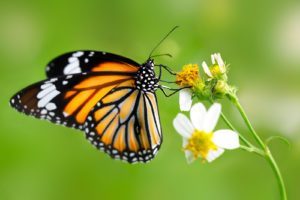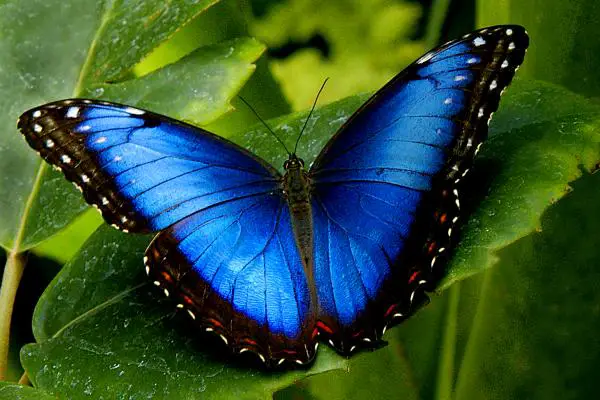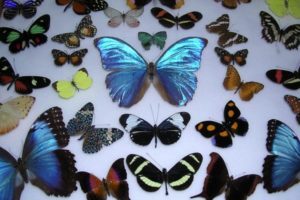In the midst of the traditional products headed by bananas, pineapples, coffee, and medical devices that have crept in recent years among the goods that Costa Rica exports the most, a small and silent sector moves its wings from the plots of more than 400 families from this Central American country famous for its biodiversity and environmental awareness. This sector producing butterflies for export consolidates little by little and leads the world trade in these colorful insects that abound in the small, but diverse, Costa Rican geography.

The business, that started 30 years ago an English volunteer to supply a single client in Birmingham, has been replicated and now reaches US$ 2 million a year in revenue, a figure far from the powerful sectors of the Costa Rican economy, but significant for the network of small producers that take advantage of the local nature. It also requires a basic educational level to learn the techniques and of a sufficient institutional network to place the product in international markets.
The United States, Europe, the United Arab Emirates, Russia, and Mexico are the main destinations for pupae, as live caterpillars are called, which are transposed weeks before the insect is born, appreciated in museums, exhibitions, laboratories, and craft workshops.
“It is an activity that has grown a lot in the last decade and that develops with a very particular social model, without large producers and with great respect for nature. It is a sector that well symbolizes much of what Costa Rica is”, explains Sergio Siles, director of the ten companies that export these insects, Costa Rican Entomological Supplies (Secsa), which is supplied by the production of small farms.

Out of the 1,500 species of diurnal butterflies that live in Costa Rica, less than 100 appear in the catalog of pupae exported, where the so-called Blue Morpho stands out, known for its striking blue color and its large size (up to 20 centimeters). It is the favorite of Jenny Víquez, a computer engineer who left her professional career to devote herself to educational farms, to produce, to train others, and to export caterpillars.
“It is a whole value chain around a passion that has gradually found a way to be profitable”, he says inside his butterfly house in a mountainous and fresh town called San Isidro de Heredia, although he also partners with people from other regions to produce species specific to each place. He indicates that his business, “Vida de Colores” (Colorful Life), participates in a market that pays US$ 2 by a pupa, inside the country, and US$ 4, outside of it.
Varied methods
Methods are varied, but they all take a painstaking job. In his case, he takes care of 900 trees of a species called pore that feeds the larvae until they are formed as pupae and are ready for export. In the short term of 1 or 2 weeks, depending on the species, the butterfly is ready to be born in the destination country. It can take 100 days from the time the egg is collected until the insect is fully formed and flies before the eyes of foreigners.

“Butterflies have become universal vehicles of environmental education throughout the world”, explains the entomologist at the University of Costa Rica (UCR), Ricardo Murillo, a specialist in these insects. “Through the butterfly exhibitions, we are raising awareness about biodiversity in the tropics. A butterfly is charismatic, it is a vehicle that connects nature with the human being around the world”, he adds in an interview published by that university’s newspaper, where a unique butterfly breeding research laboratory operates in Central America.
The sector works as a community, although they do not stop competing with each other, Víquez acknowledges inside the enclosure that she herself built to exhibit her butterflies and didactic material. It is like raising cows or attending a large garden, he says to size the work. It is a task that is repeated every day; plant the trees that feed the larvae, prune, cover with

fabrics to avoid being eaten by birds or spiders, watch when they form as a pupa and keep the account well to know in what way it must be exported and how long it may take. “It is not going to be that a lot of butterflies are born and fly off inside a plane, although it would be a very beautiful scene”, he jokes about it.
